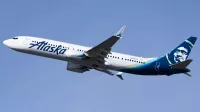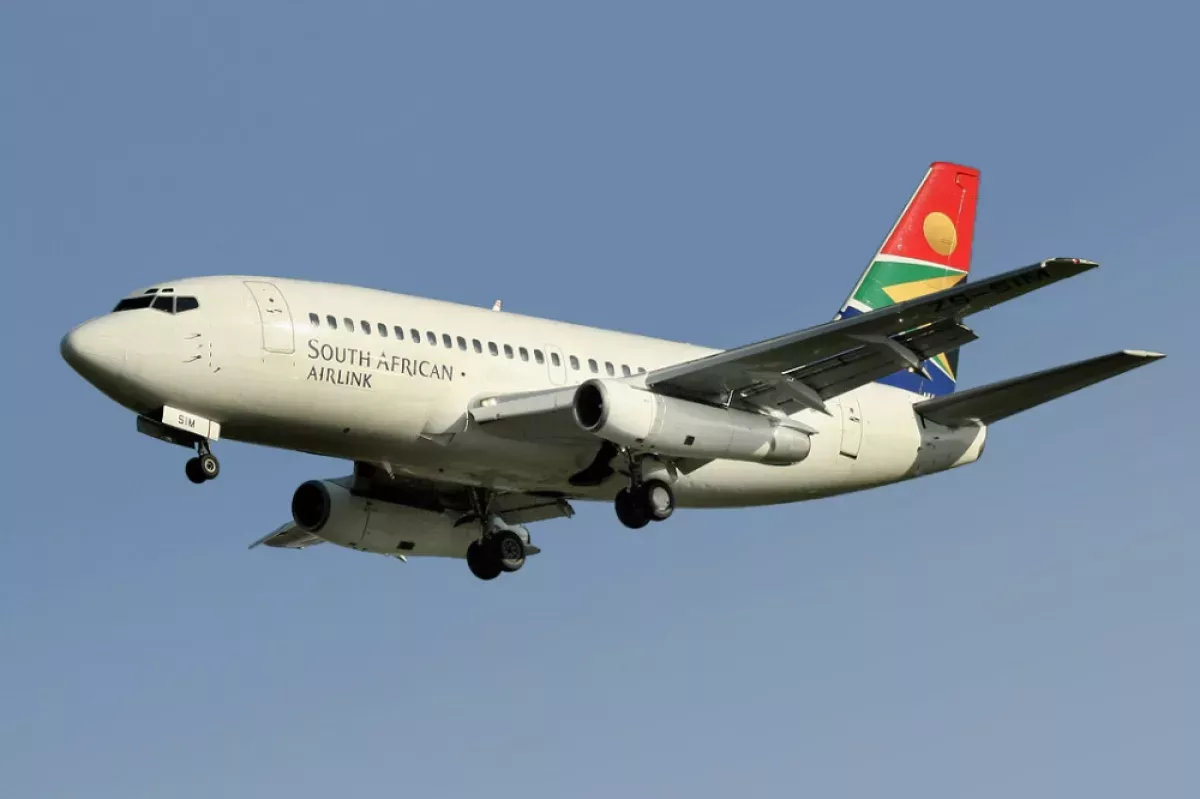The Boeing 737 is a narrow-body aircraft manufactured by Boeing in Renton, Washington. Conceived in 1964 to complement the Boeing 727 for shorter routes, it features a similar fuselage width and six-abreast seating. However, it utilizes two underwing Pratt & Whitney JT8D low-bypass turbofan engines. The initial 737-100 first flew in April 1967 and entered service with Lufthansa in February 1968. A longer variant, the 737-200, followed in April 1968. The 737 has evolved through four generations, with variants accommodating between 85 and 215 passengers.
1959: Boeing Analysis of Commercial Jet Airplane Accidents Begins
In 1959, Boeing began an analysis of commercial jet airplane accidents. By 2013, the hull loss rate for the Original series was found to be 1.75 per million departures.
February 13, 2006: 5,000th Boeing 737 Delivered to Southwest Airlines
On February 13, 2006, Boeing delivered its 5,000th 737 to Southwest Airlines.
April 2009: 6,000th Boeing 737 Delivered to Norwegian Air Shuttle
In April 2009, Boeing delivered its 6,000th 737 to Norwegian Air Shuttle.
December 16, 2011: 7,000th Boeing 737 Delivered to Flydubai
On December 16, 2011, Boeing delivered its 7,000th 737 to Flydubai.
2013: Boeing Analysis of Commercial Jet Airplane Accidents
A Boeing analysis of commercial jet airplane accidents between 1959 and 2013 found that the hull loss rate for the Original series was 1.75 per million departures, for the Classic series 0.54, and the Next Generation series 0.27.
2013: Boeing 737 Operation Statistics
In 2013, the Boeing 737 was operated by over 342 airlines in 111 countries, representing over 25% of the global large jet airliner fleet. The 737 had transported over 16.8 billion passengers across 119 billion miles in more than 184 million flights.
April 16, 2014: 8,000th Boeing 737 Delivered to United Airlines
On April 16, 2014, Boeing delivered its 8,000th 737 to United Airlines.
March 13, 2018: 10,000th Boeing 737 Rolled Out
On March 13, 2018, the 10,000th Boeing 737 was rolled out and was slated to be delivered to Southwest Airlines, with over 4,600 aircraft in backlog.
October 2018: Crash of Lion Air Flight 610
In October 2018, Lion Air Flight 610, a 737 MAX 8 aircraft, crashed, resulting in 346 deaths when combined with the Ethiopian Airlines Flight 302 crash in March 2019. Subsequently, civil aviation authorities worldwide grounded the 737 MAX series.
2018: Boeing 737 Statistics
By 2018, over 7,500 Boeing 737s were in service, with an average of 2,800 aircraft airborne at any moment. These aircraft carried around three million passengers daily, and the global 737 fleet had carried over 22 billion passengers since its introduction.
March 2019: Crash of Ethiopian Airlines Flight 302
In March 2019, Ethiopian Airlines Flight 302, a 737 MAX 8 aircraft, crashed, resulting in 346 deaths when combined with the Lion Air Flight 610 crash in October 2018. Subsequently, civil aviation authorities worldwide grounded the 737 MAX series.
October 2019: Orders Drop for Boeing 737
In October 2019, Boeing 737 orders dropped by 90% due to the grounding of the 737 MAX series following safety concerns. The 737 MAX backlog decreased by 182 due to Jet Airways' bankruptcy. Boeing's airliner backlog experienced its first drop in at least 30 years.
December 16, 2019: Boeing Suspends 737 MAX Production
On December 16, 2019, Boeing announced it would suspend production of the 737 MAX series starting in January 2020 due to ongoing safety concerns and the grounding of the aircraft.
January 2020: Boeing Suspends 737 MAX Production
In January 2020, Boeing suspended production of the 737 MAX series due to ongoing safety concerns and the grounding of the aircraft, which had been announced on December 16, 2019.
May 27, 2020: Production of the 737 MAX Resumed
On May 27, 2020, Boeing resumed production of the 737 MAX series after it had been suspended in January 2020.
November 2023: Boeing 737 Accidents and Incidents
As of November 2023, the Boeing 737 family had been involved in 529 aviation accidents and incidents, including 215 hull loss accidents, resulting in 5,779 fatalities.
2023: Boeing Analysis of Commercial Jet Airplane Accidents
As of 2023, Boeing's analysis showed hull loss rates per million departures: Original series at 1.78 (0.87 fatal), Classic series at 0.81 (0.26 fatal), Next Generation series at 0.18 (0.04 fatal), and MAX series at 1.48 (1.48 fatal).
February 2025: Boeing 737 Family Orders
As of February 2025, a total of 16,744 units of the Boeing 737 family had been ordered, with 4,747 orders pending. When including additional criteria for recognizing contracted backlog, the pending orders were 4,282.
Mentioned in this timeline

The lion Panthera leo is a large cat species native...
NASA the National Aeronautics and Space Administration is an independent...
China officially the People's Republic of China PRC is an...

The Boeing Company is a multinational corporation and one of...

The Boeing MAX is the latest iteration of the Boeing...

Seattle is the most populous city in Washington state and...
Trending
The North American Aerospace Defense Command NORAD is a joint United States and Canada organization Its primary mission is to...

8 months ago Sanju Samson Injured, Retires Hurt as Capitals and Royals go to Super Over

5 months ago Celebrity Cruises Ship Loses Power, Drifts Off Italy Coast for Three Hours

Airlines are companies that offer air transport services for passengers and freight using aircraft They may form partnerships with other...

7 months ago Logan Paul and Nina Agdal Wedding Fan Invite, WWE Success Fuels Criticism

Drew Brees is a former American football quarterback playing seasons in the NFL primarily with the New Orleans Saints He...
Popular

Candace Owens is an American conservative political commentator and author...

Tucker Carlson is an American conservative political commentator known for...

XXXTentacion born Jahseh Dwayne Ricardo Onfroy was a controversial yet...

Ilhan Omar is an American politician currently serving as the...

Kashyap Pramod Patel is an American lawyer who became the...

Bill Gates an American businessman and philanthropist revolutionized personal computing...
